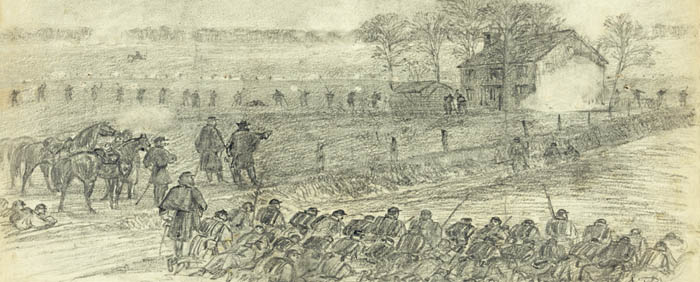The Demonstration on the Rapidan River began after Union Major General Benjamin Butler, commanding the Army of the James in Fort Monroe, Virginia, learned that General Robert E. Lee had detached a small portion of the Army of Northern Virginia to North Carolina. Convinced that Lee had sent a larger detachment than he actually did, Butler believed that an attack by the Army of the Potomac would force Lee to use troops from Richmond’s defenses to ward off the attack. Major General John Sedgwick, temporarily commanding the Army of the Potomac, protested that Lee had detached fewer men than Butler thought and that the local roads and weather were too poor for a winter attack. However, both Secretary of War Edwin M. Stanton and General-in-Chief Henry W. Halleck overruled his objections and ordered him to attack on February 6th.
Morton’s Ford (February 6, 1864) – This battle took place in Orange and Culpeper Counties of Virginia near Morton’s Ford, near a bend in the Rapidan River. To distract attention from a planned cavalry-infantry raid up the Peninsula on Richmond, the Federal army forced several Rapidan River crossings on February 6, 1864. AII Corps division crossed at Morton’s Ford, the I Corps at Raccoon Ford, and the Union cavalry crossed at Robertson’s Ford. Confederate General Richard Ewell’s Corps resisted the crossings. Fighting was sporadic but most severe at Morton’s Ford. By February 7th, the attacks had stalled, and the Federals withdrew during the night. The inconclusive battle resulted in estimated Union casualties of 262 and 60 Confederate.
Compiled and edited by Kathy Weiser-Alexander/Legends of America, updated May 2021.
Also See:
Sources:
Battlefields.org
National Park Service Battle Descriptions (no longer available online)
National Park Service
Wikipedia

